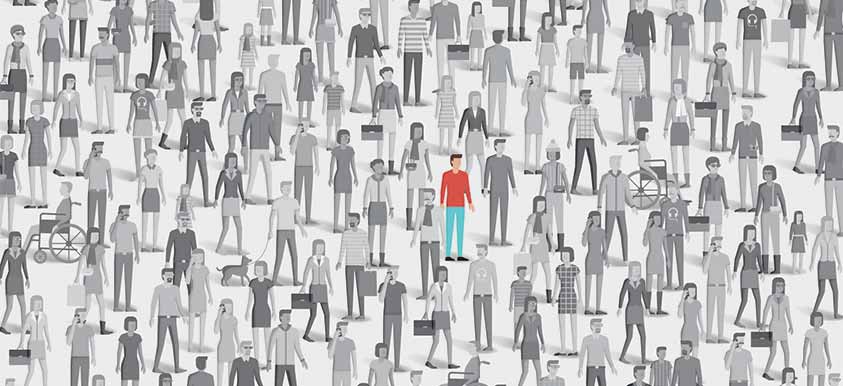It can be, but it often causes a host of problems
In virtually every workplace, certain traits are used to describe employees: Mary is a hard-worker, Jerry is lethargic, Tom is brilliant and Jen is chatty. Such descriptions often become labels that at best help to generally convey employees’ qualities, but at worst put them into a box that doesn’t really fit, leading to a host of problems.
All of us display a multitude of qualities, including many that are thought of as opposites. At various times, we are hard-working, lethargic, brilliant and chatty. In fact, the vast majority of descriptors can be used to characterize virtually anyone—and make some sense.
I previously worked with a woman who I thought was very detail-oriented, thorough and skillful in completing her writing assignments. I once talked with the office manager about the woman, and he said that she was incompetent. I was totally shocked by his perception until he explained that she never provided accurate expense reports. It turned out that the office manager and I had formed opinions based on different aspects of her work.
Neither my positive descriptions of the woman as “detail-oriented,” “thorough” and “skillful” nor the office manager’s assessment of her as “incompetent” completely fit, though both of them were somewhat accurate. She displayed all of these characteristics; as with all of us, she defies simple labeling, which can affect the way we are viewed by ourselves and others.
Pros & Cons of Labeling
Susan Heitler, a Denver-based clinical psychologist and author of Prescriptions Without Pills: for Relief from Depression, Anger, Anxiety and More, has developed some interesting insights about the effects of labeling.
She feels that by labeling employees’ strengths and weaknesses, managers are able to put them in suitable positions and offer coaching where needed. This, in turn, can help employees to develop skills and traits that enable them to advance in their professional careers. But Heitler, in one of her “Resolution, Not Conflict” blogs on psychologytoday.com, cautions that “words have the power to define what we see, potentially blocking us from seeing aspects that differ from the label.”
She illustrates the point by recalling the experiences of a client, Gerald (not his real name), who antagonized workers by seemingly ignoring them. They began describing him as “out to lunch” and “a space case” until they realized that in fact, he wasn’t ignoring them at all: He was concentrating with such unusually strong intensity that he didn’t hear them.
“With this more positive description of what was going on in Gerald’s head, colleagues were more likely to feel good-humored toward him, and to find playful rather than annoyed ways to engage his attention,” Heitler told Smart Meetings.
This new, more accurate perspective undoubtedly was welcomed by Gerald; one of the most frustrating things for an employee is to feel inaccurately and unfairly labeled.
Labeling as Misguided Power
Unfortunately, some managers and employees become imprisoned by their own negative categorizations of others.
“Usually, negative labels that put others down are for feeling powerful,” Heitler says. “Labels give power. When you can name something, you feel connected with it, like you can impact or even control it.”
While this feeling may give transient feelings of enhanced power, it has negative impacts on the person being labeled and on the labeler’s ability to stay positive and constructive, she says.
Heitler finds that once you’ve begun using a label—such as narcissistic, for example—to describe someone, you are at risk of interpreting everything he or she does in a negative light.
“If a friend you have labeled narcissistic brings you chicken soup when you’re ill, instead of appreciating the generous gesture, you may think to yourself, ‘She’s just trying to make herself look good,’” she says.
Self-Fulfilling Prophecies
Heitler has found that giving yourself negative labels can result in self-fulfilling prophecies.
“Calling yourself an anxious person, for instance, can put you at risk for ignoring the many times that you feel relaxed, playful and loving,” she says. “Label yourself an anxious person, and you will be more likely to notice the many times that you feel a flutter of nervousness that in the past you might have ignored.”
She told the story of another client, Joe, who developed cancer. Rather than being labeled as a cancer patient, he wanted to maintain his full, positive identity.
“Joe’s concern was well-based,” Heitler says. “He did not want his friends to react to him as “the person with cancer” instead of as the funny, generous and capable person he had been and still was.
“With regard to how he viewed himself, Joe noticed that the sicker he became, the more difficulty he had holding on to his boarder identity. At the same time, when he slipped into seeing himself primarily as a cancer patient, the sicker he became.”
Constructive Labeling
So, how can labeling be done constructively?
1. Use it very selectively, and try to avoid broad, negative cliches (stubborn, bossy, lax, angry, etc.), that don’t recognize the uniqueness of each person.
2. Realize that labels aren’t the person: They’re simply one limited way of describing him or her, and are always dependent upon our own subjective perceptions. Try to see people afresh, with an open mind, each day.
3. Focus on the positive in people’s behavior. “In the workplace, instead of calling someone sloppy, you might see him as focused on what’s most important, or capable of handling many projects at once and highly productive, or able to let work get finished more quickly because of being willing to forego perfectionism,” Heitler says.
4. Don’t get stuck with your labeling. Always keep in mind that people change; so, labels that you initially use to describe yourself or others may be less fitting or generally unfitting over time.




